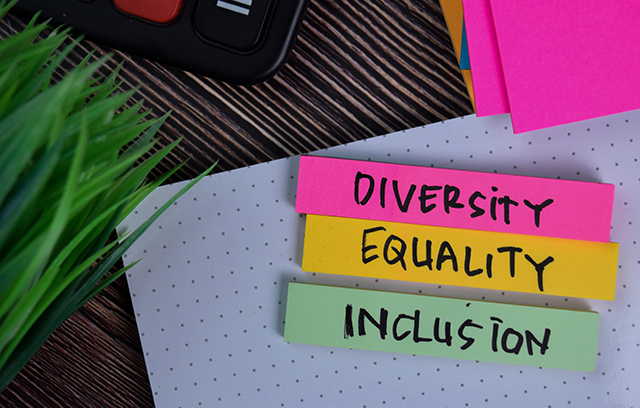CFA Institute has launched the UK edition of its voluntary diversity, equity and inclusion (DEI) code for the investment profession designed to support organisations seeking to accelerate change by fostering a commitment to DEI.
Signatory firms would commit to six metrics-based principles under the DEI Code intended to enable the greater inclusion of wider viewpoints from the best talent, with the aim to lead to better investment outcomes, better working environments and a cycle of positive change for future generations.
Among the six principles, investment organisations will be expected to expand the diverse talent pipeline, design and implement inclusive and equitable hiring and onboarding practices, and promote practices that reduce barriers to progress. Organisations should also use their position and voice to promote DEI, improve DEI outcomes and increase measurable DEI results, the organisation said.
“CFA Institute is seeking to build a more representative and resilient industry, and we recognise that far more needs to be done across all aspects of DEI,” said Margaret Franklin, president and CEO of the CFA Institute.
See also: FCA bids to boost diversity and inclusion in financial services
“We started with out DEI Code in the US and Canada, and our UK initiative is in recognition that DEI means different things to different people in different markets. I am proud to note that CFA Institute hereby becomes the first signatory to the UK edition of the DEI Code.”
Alongside CFA Institute, asset manager PGIM was announced as one of the initial signatories to the code, with more to be announced in due course.
According to Sarah Maynard, global senior head of external diversity, equity and inclusion at CFA Institute, the CFA chose not to simply replicate the North American DEI code – launched last year and adopted by over 160 investment organisations – because of the many differences in culture, in employment law and definitions of what constitutes diversity and inclusion, particularly in relation to gender and other forms of identity.
Therefore, the UK DEI Code “incorporates UK variations in demographics, culture and societal norms”, and offers a structure that supports employers, DEI leaders and HR professionals in building “impactful and measurable DEI strategies”.
To devise the UK DEI Code, the CFA Institute worked with CFA Society UK and a DEI Code (UK) Working Group drawn from UK-based investment and DEI leaders in the UK. Using the DEI Code in North America as a foundation, it was adapted for the specific challenges and opportunities associated with the UK market.
“In the working group, we have given a lot of thought to encouraging signatories to raise their ambitions on DEI, but without introducing a long list of prescriptive requirements,” said Lindsey Stewart, CFA, director of investment stewardship research at Morningstar and lead of the working group.
“The code is designed to be scalable across a range of organisation sizes and structures, and most importantly, emphasises how important it is for signatories to demonstrate progress over time. The aim is cultural change, not tick-box compliance.”
Reporting requirements
DEI Code signatories will be asked to provide a confidential, annual progress report to CFA Institute using an accompanying reporting framework.
This should include details on the company’s DEI strategy, policy, commitments and high-level objectives, as well as an oversight of its governance process and an implementation plan to integrate DEI within the signatory organisation’s people, processes and policies. In turn, CFA Institute will report on industry-level statistics once a critical mass of signatories is reached.
Signatory organisations must meet three main foundational reporting requirements within two years of becoming a DEI Code signatory. This includes establishing a senior leader ownership and oversight governance process; formal, publicly available communications outlining the organisation’s DEI strategy and high-level objectives; and forming an implementation plan to integrate DEI within the signatory organisation’s people, processes and policies.
For more insight on ESG issues, please click on www.esgclarity.com








